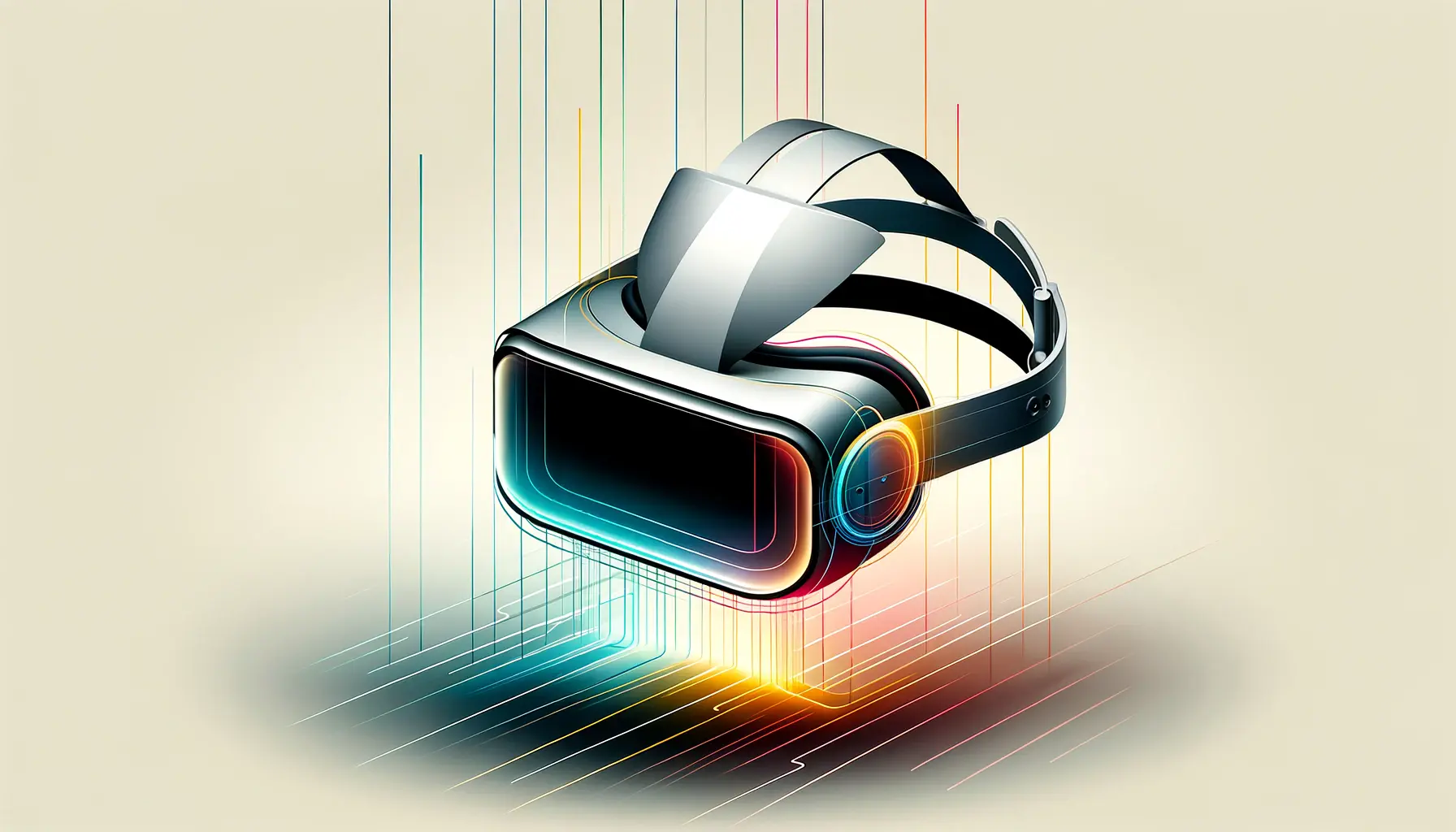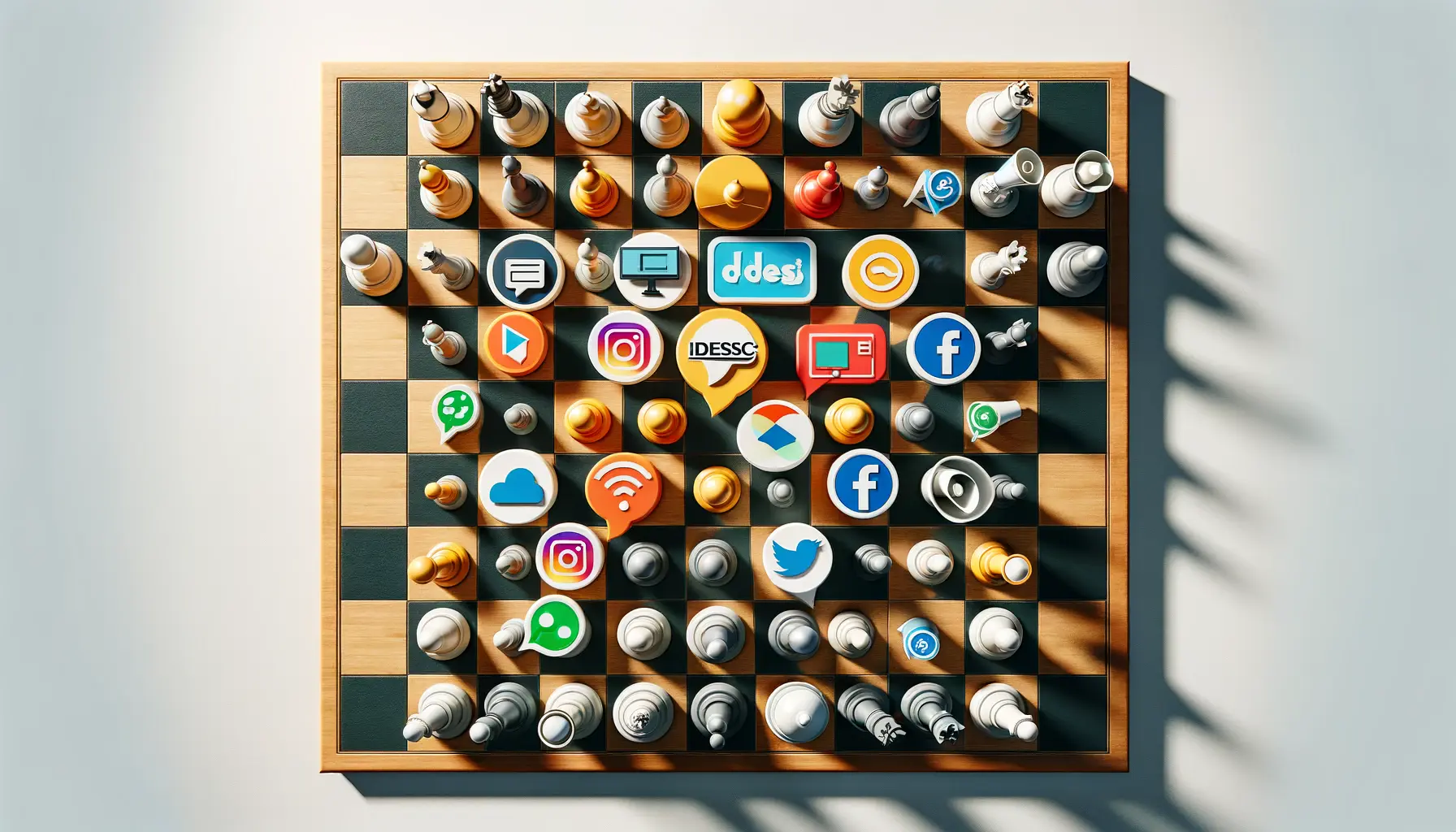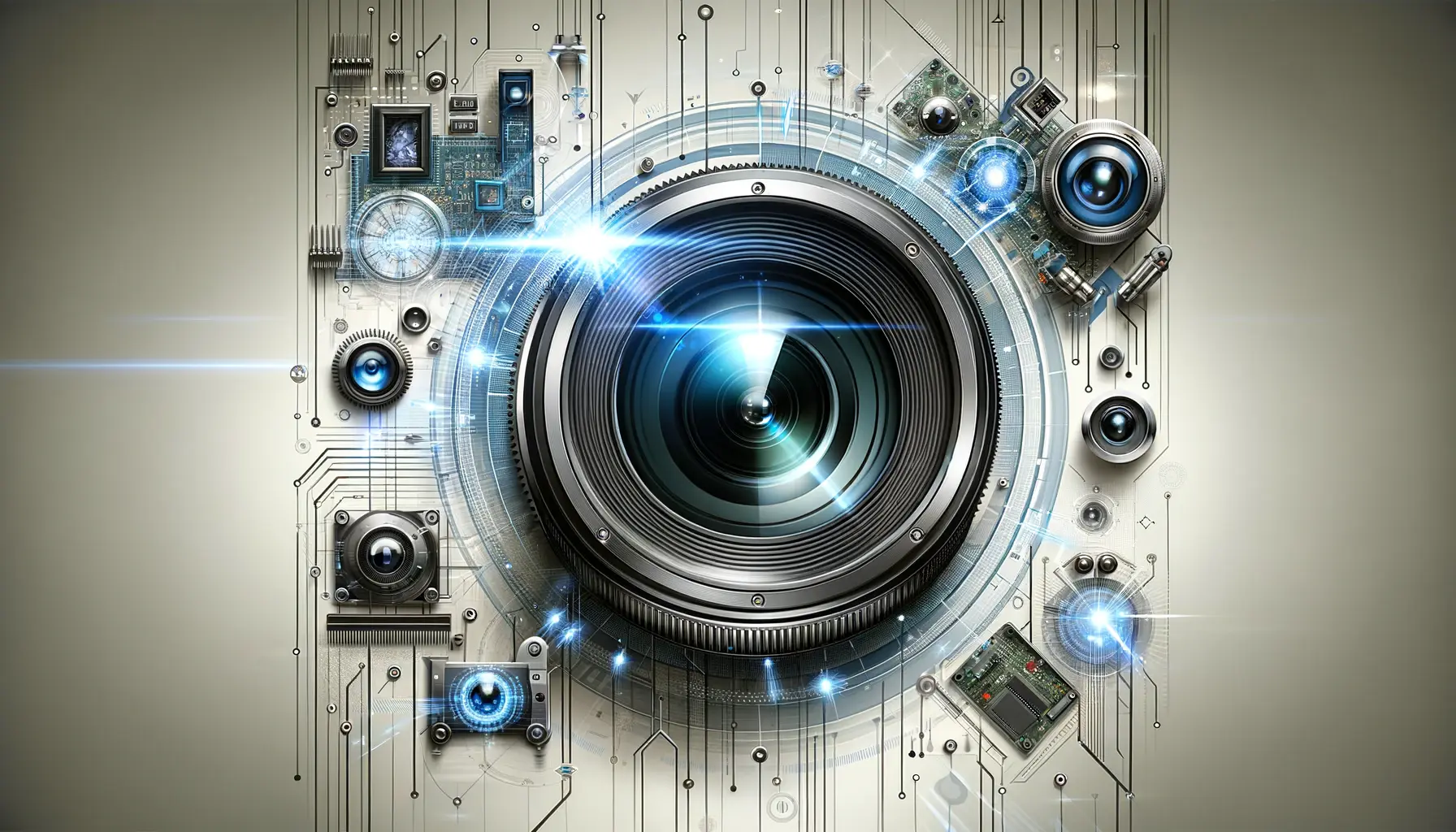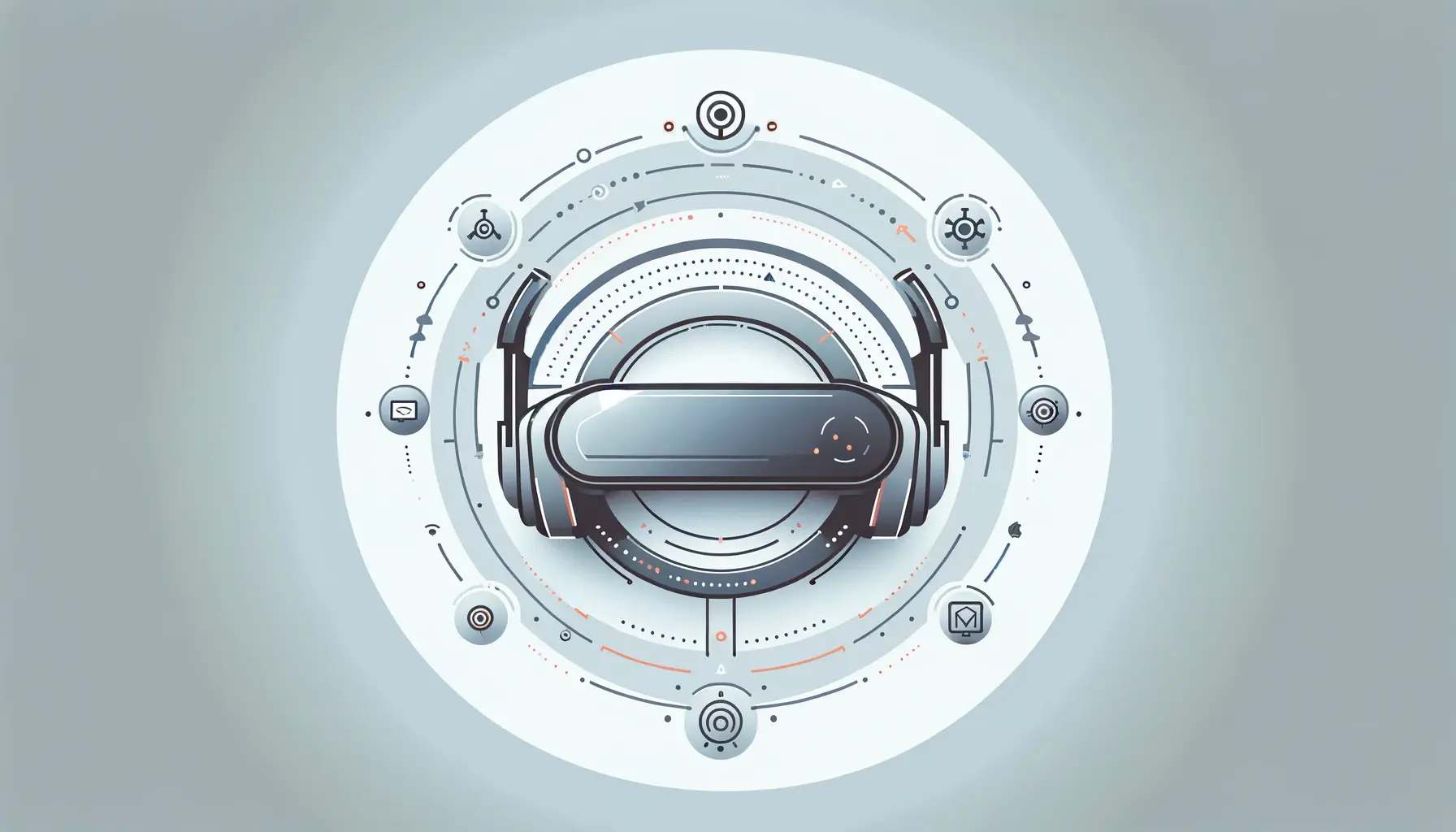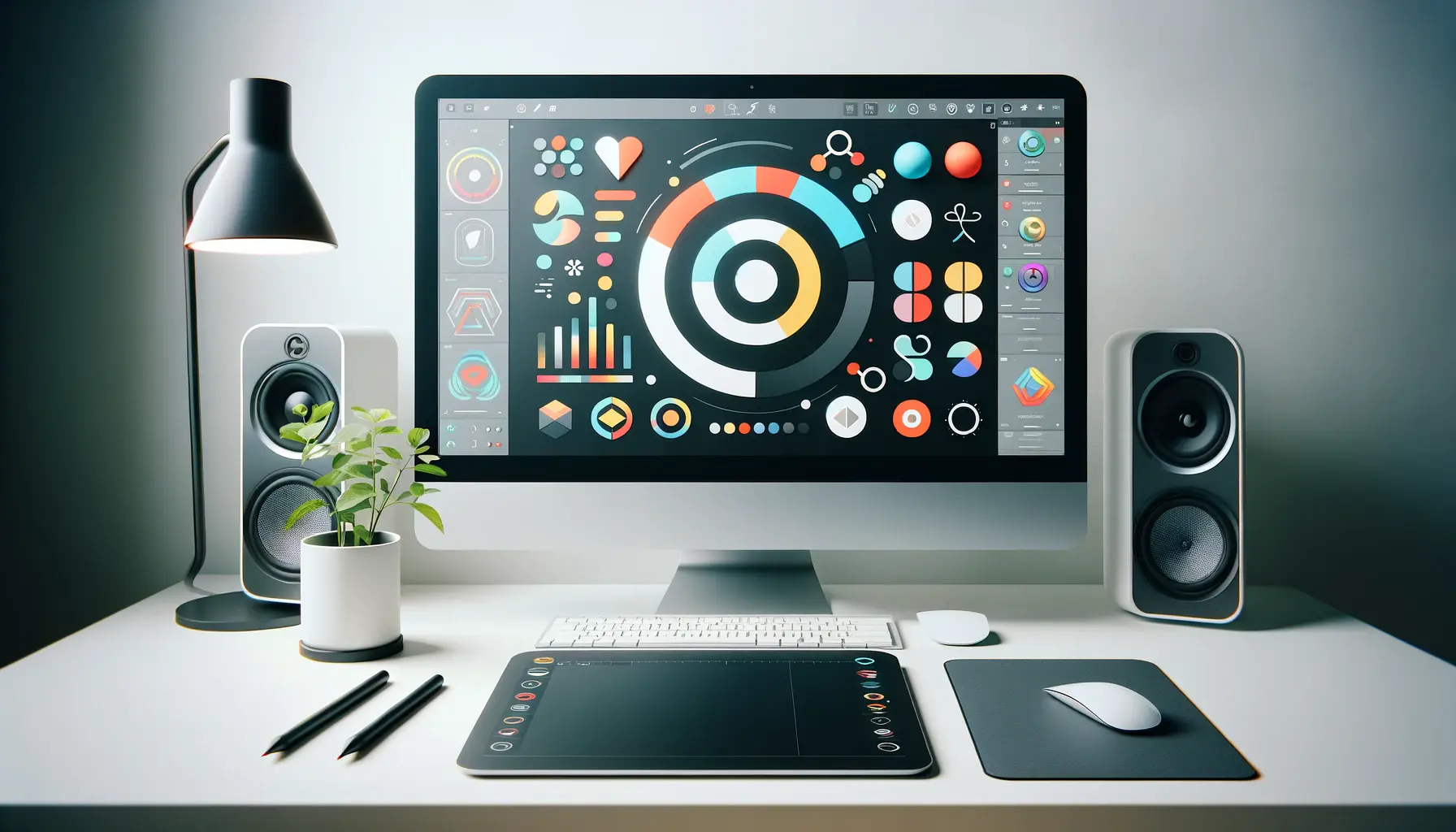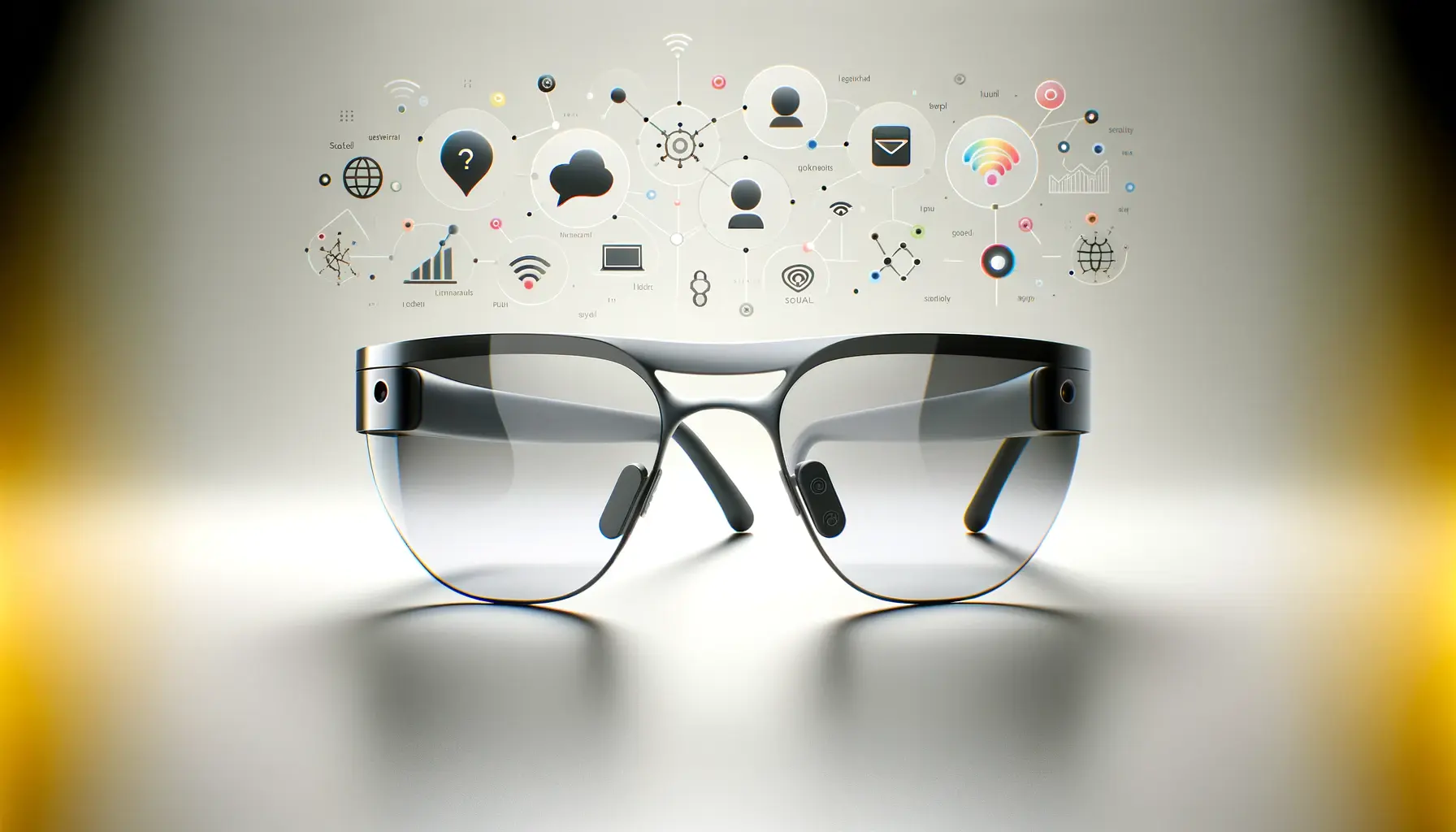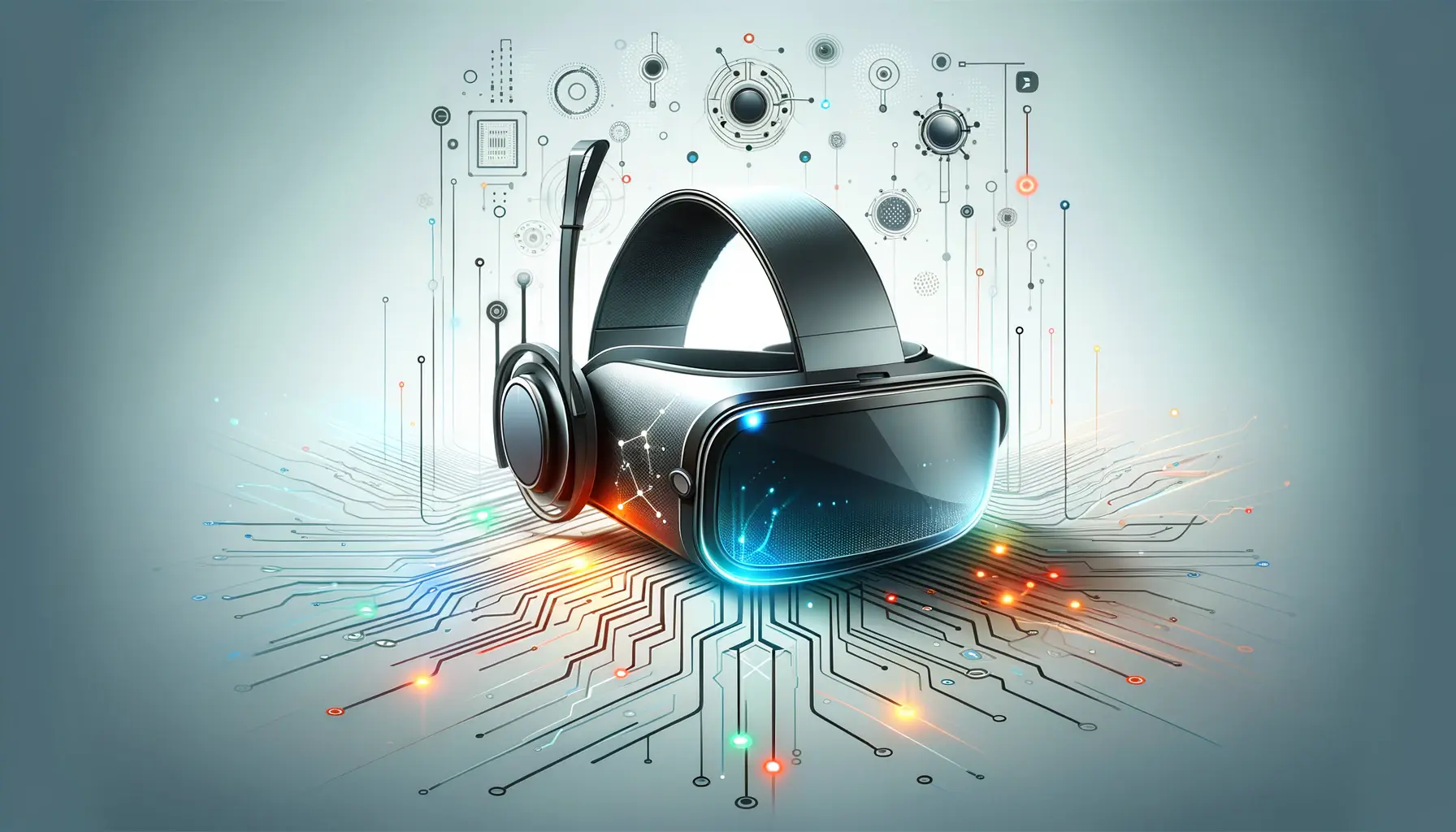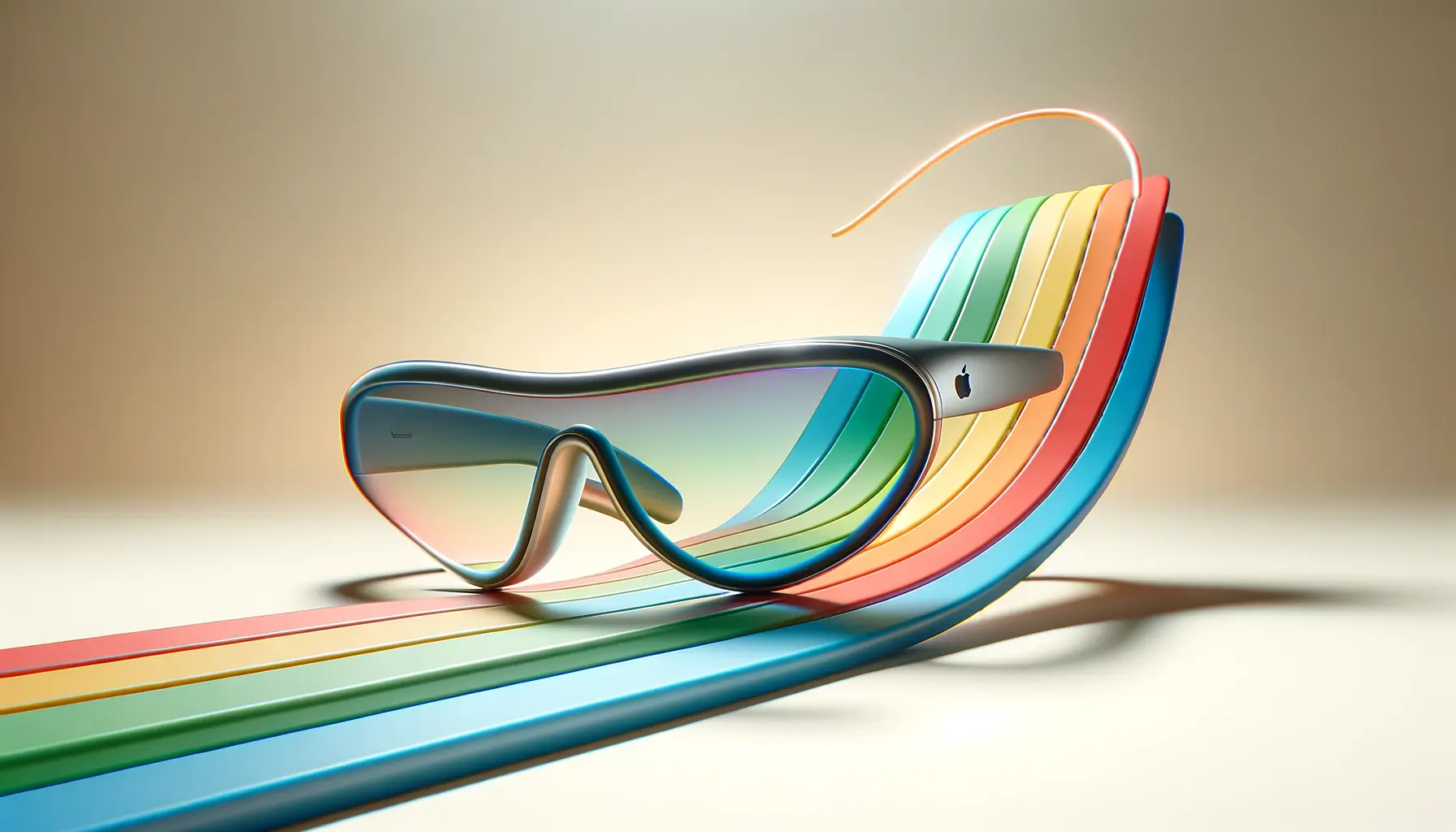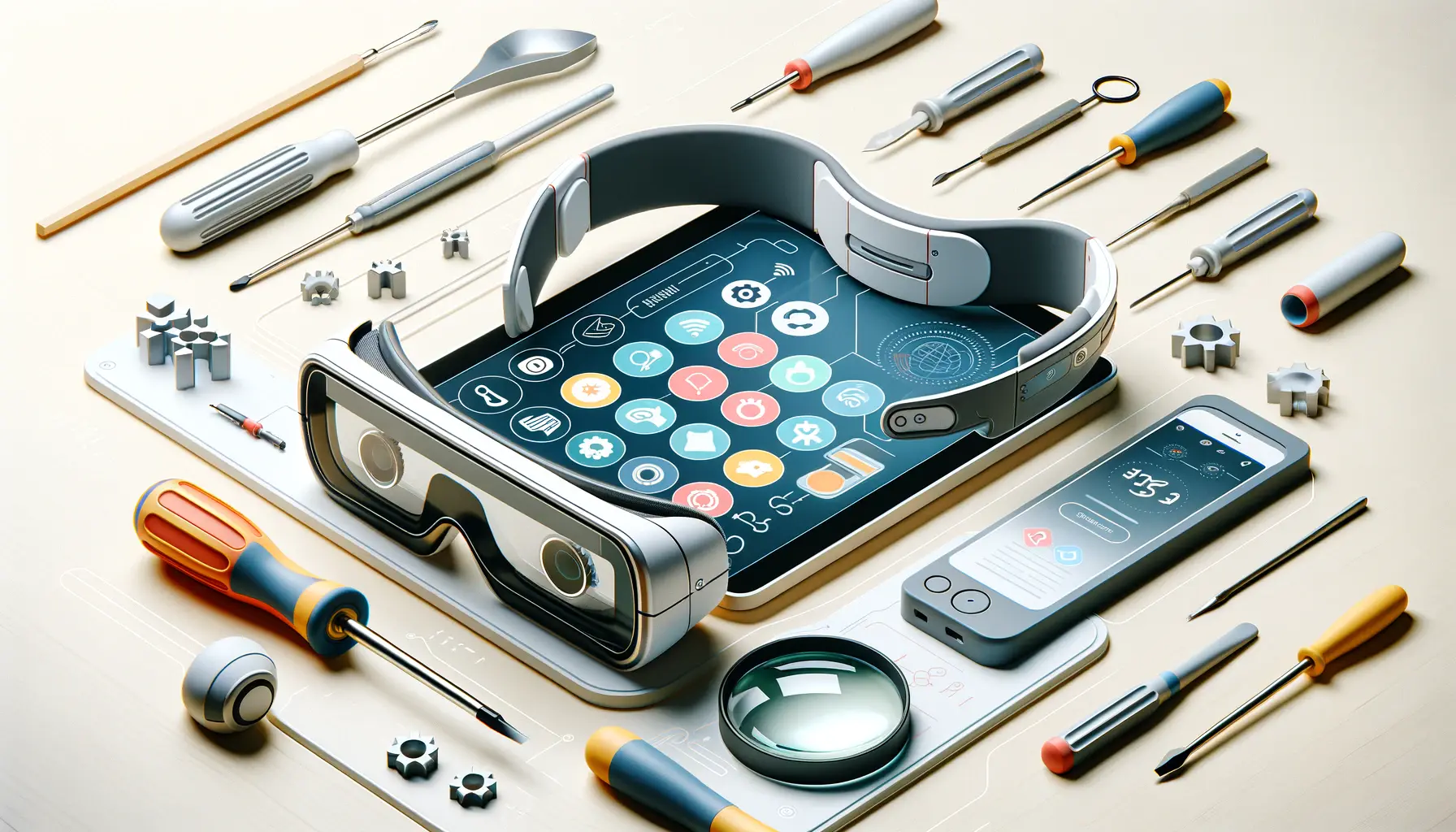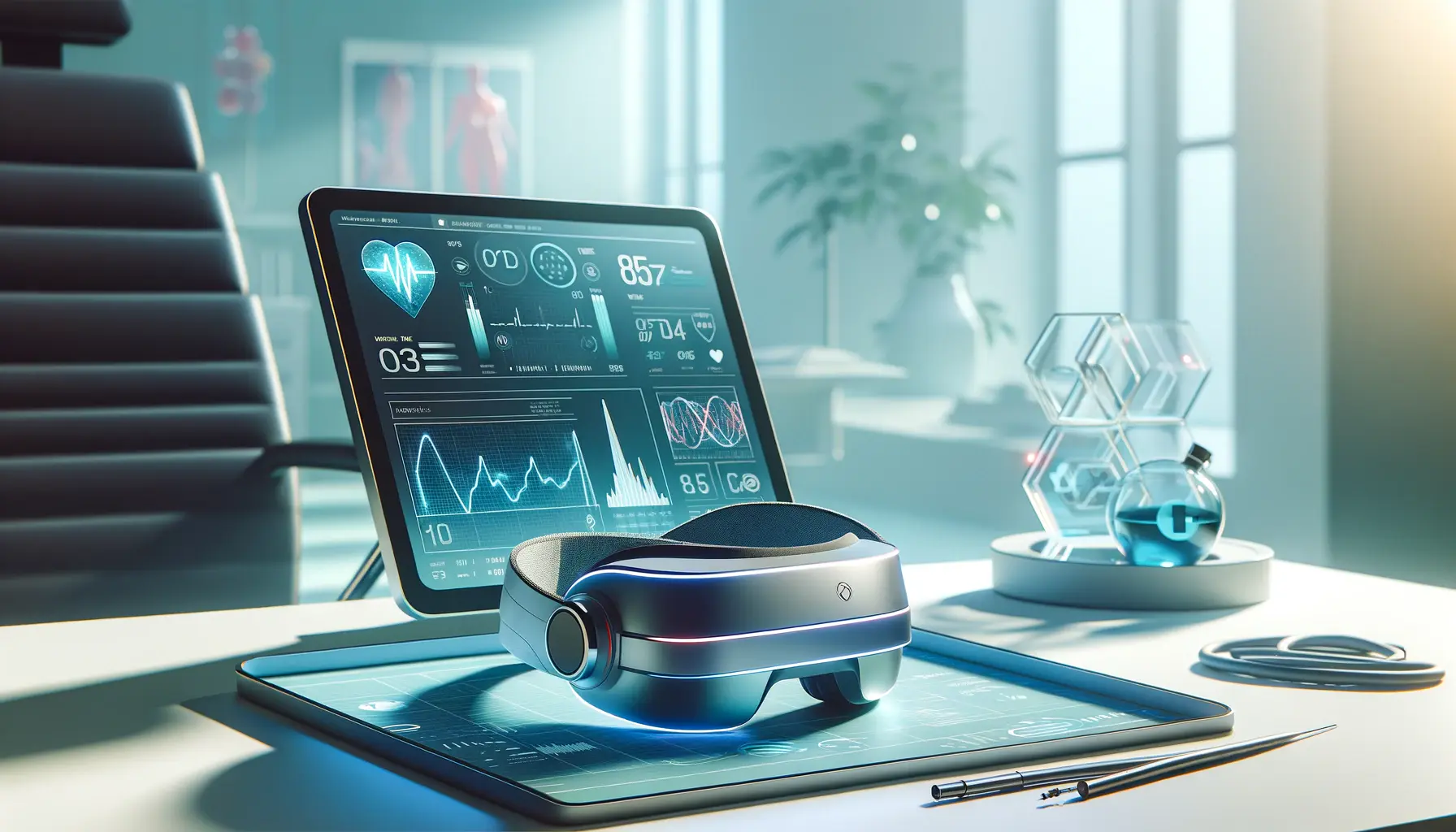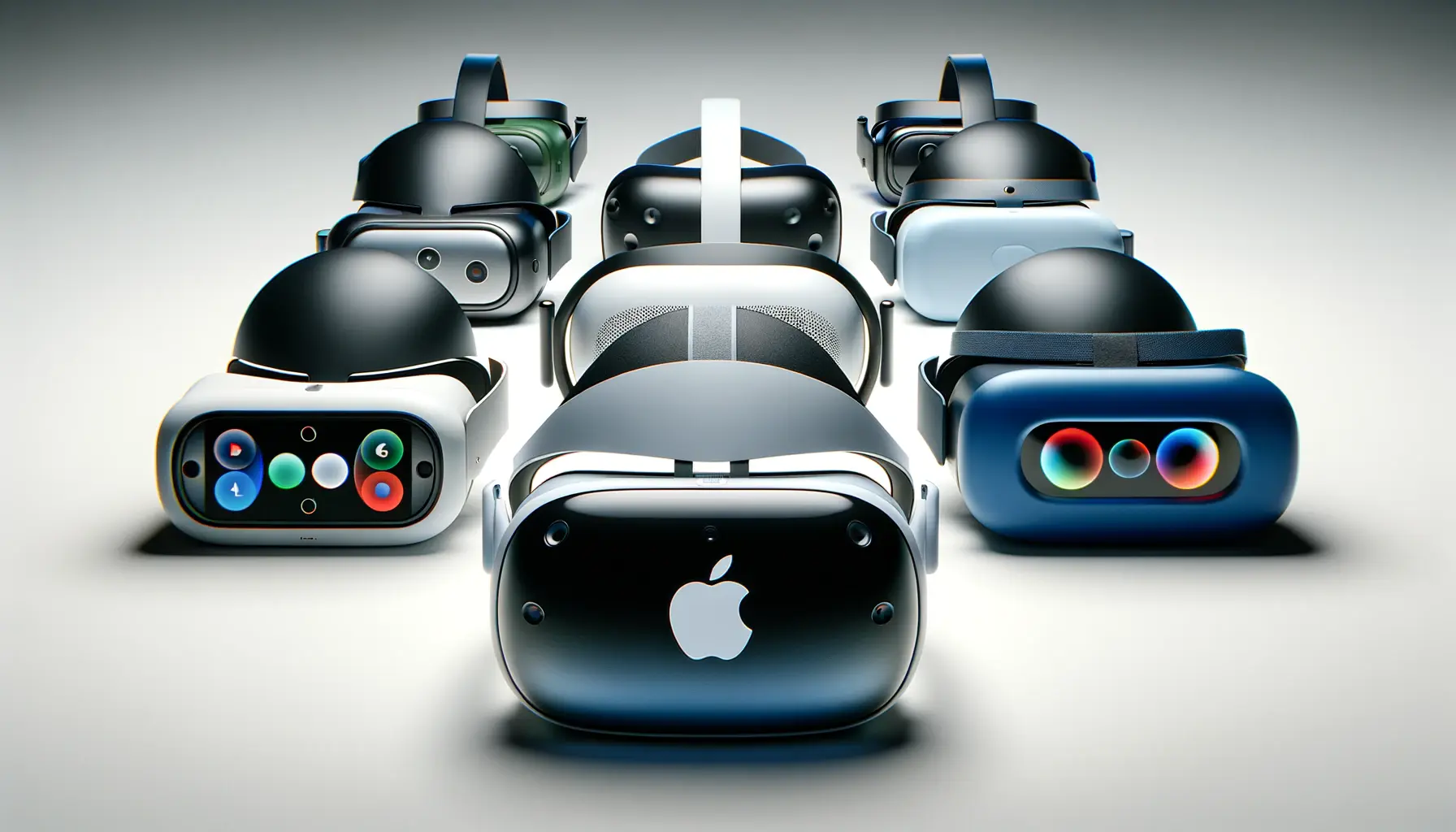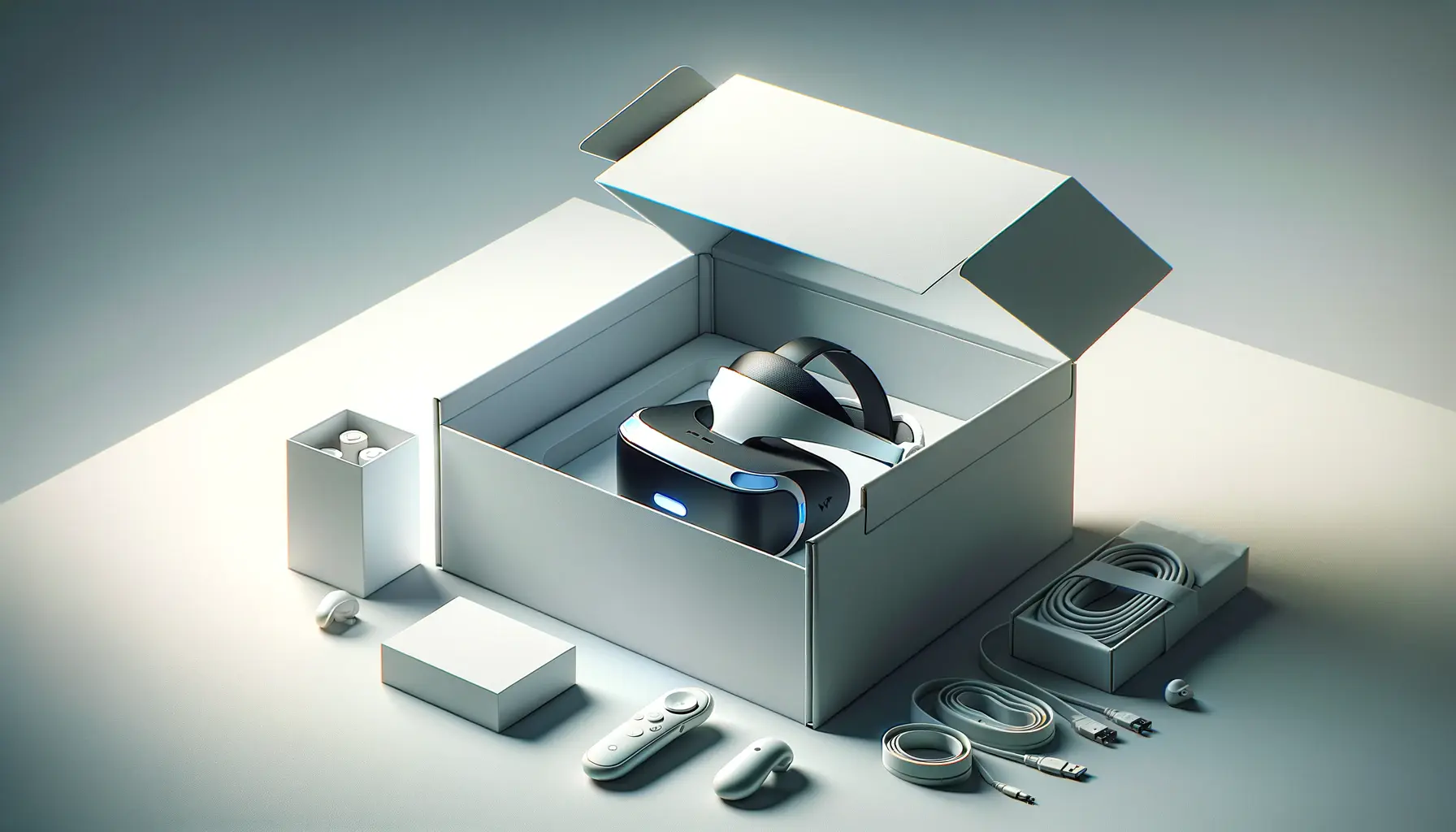The unveiling of Apple Vision Pro marks a significant leap in the realm of wearable technology, setting new standards for display technology and immersive experiences.
This innovative device not only showcases Apple’s commitment to pushing the boundaries of what’s possible but also highlights the company’s prowess in integrating cutting-edge technology with user-centric design.
The Apple Vision Pro, with its advanced display technology, represents a milestone in the evolution of virtual and augmented reality devices, offering users unparalleled clarity, color accuracy, and immersion.
At the heart of Apple Vision Pro’s appeal is its display technology, which is a testament to Apple’s relentless pursuit of perfection.
The device’s micro-OLED display, boasting an impressive 23 million pixels, ensures that each visual detail is rendered with utmost precision, offering a visual experience that’s as close to reality as possible.
This article aims to delve deep into the intricacies of Apple Vision Pro’s display tech, exploring how it sets a new benchmark for wearable devices and what it means for the future of digital interaction and content consumption.
- The Evolution of Display Technology in Wearables
- Understanding Micro-OLED Technology
- Advancements in Visual Immersion
- Challenges and Solutions in Display Tech
- The Future of Display Technology in Wearables
- Integrating Display Tech with Other Innovations
- Design Considerations for Next-Gen Wearables
- Envisioning the Future with Apple Vision Pro’s Display Technology
- Apple Vision Pro Display Technology FAQs
The Evolution of Display Technology in Wearables
From LCD to Micro-OLED
The journey from Liquid Crystal Display (LCD) technology to Organic Light-Emitting Diode (OLED) and, eventually, to micro-OLED in wearable devices illustrates a significant evolution in display technology.
LCDs, once the backbone of display tech, were known for their reliability and cost-effectiveness but lacked in contrast ratios and had limited viewing angles.
The advent of OLED technology marked a substantial improvement, offering better contrast, higher brightness levels, and more energy efficiency, which is crucial for wearable devices.
Micro-OLED technology, as utilized in the Apple Vision Pro, takes these advantages to the next level.
By shrinking the size of pixels, micro-OLED displays achieve a much higher pixel density, resulting in sharper images and more vibrant colors.
This leap in technology not only enhances the visual experience for the user but also opens up new possibilities for applications requiring high levels of detail and color accuracy, such as virtual reality (VR) and augmented reality (AR).
Impact on User Experience
The transition to micro-OLED technology in wearables like the Apple Vision Pro significantly impacts the user experience.
With its high pixel density and superior color reproduction, users can enjoy a more immersive and realistic visual experience, whether they’re watching a movie, playing a game, or using AR applications.
The display’s ability to render deep blacks and true-to-life colors makes for a more engaging and enjoyable viewing experience, setting a new standard for what users can expect from wearable technology.
The Apple Vision Pro’s use of micro-OLED technology not only signifies a leap in display quality but also demonstrates Apple’s commitment to enhancing user experience through innovation.
Understanding Micro-OLED Technology
The core of Apple Vision Pro’s groundbreaking display lies in its micro-OLED technology, a sophisticated advancement that significantly enhances the visual experience for users.
Unlike traditional display technologies, micro-OLED is characterized by its ability to provide exceptional color accuracy, contrast ratios, and energy efficiency.
This section delves into the specifics of micro-OLED technology, highlighting how it differentiates from its predecessors and its implications for wearable devices.
Micro-OLED displays are built directly onto silicon wafers, allowing for a much smaller display size without compromising on the number of pixels.
This results in an incredibly high pixel density, which is crucial for devices like the Apple Vision Pro, where the display is viewed from a very close distance.
The benefits of this technology are manifold, impacting not just the quality of the display but also the overall design and functionality of wearable devices.
Key Features of Micro-OLED Displays
- High Pixel Density: Micro-OLED technology enables displays to achieve pixel densities that far exceed those of traditional OLEDs, resulting in sharper and more detailed images.
- Improved Color Accuracy: With a wider color gamut and higher contrast ratios, micro-OLED displays offer vibrant colors and deeper blacks, making visuals more lifelike.
- Energy Efficiency: Micro-OLED displays consume less power, a critical advantage for wearable devices where battery life is a key concern.
- Faster Response Times: The technology allows for quicker refresh rates and response times, reducing motion blur and enhancing the viewing experience for dynamic content.
Implications for Wearable Technology
The adoption of micro-OLED technology in devices like the Apple Vision Pro has significant implications for the future of wearable technology.
Firstly, it enables the creation of smaller, lighter devices without sacrificing screen quality, addressing one of the major limitations of wearable tech.
Secondly, the enhanced visual quality opens up new possibilities for applications, particularly in the fields of VR and AR, where immersive experiences are paramount.
The integration of micro-OLED technology into wearables represents a pivotal shift in how we interact with digital content, making it more immersive and engaging than ever before.
Advancements in Visual Immersion
The Apple Vision Pro’s display technology is not just about the sharpness of images or the vibrancy of colors; it’s fundamentally about creating a new level of visual immersion.
This immersion is key to delivering experiences that are not only captivating but also transformative, allowing users to feel as though they are truly part of a digital world.
The advancements in display technology, particularly through the use of micro-OLED, play a crucial role in achieving this level of immersion.
Visual immersion in the context of wearable technology like the Apple Vision Pro involves a combination of high-resolution displays, wide color spectrums, and advanced rendering techniques.
These elements work together to create a seamless and convincing virtual environment, whether for gaming, media consumption, or augmented reality applications.
The goal is to make the digital content indistinguishable from the real world, or to enhance the real world with digital overlays that feel natural and intuitive.
Components of Immersive Visual Experiences
- High-Resolution Displays: Essential for rendering detailed and lifelike images, ensuring that every element within the virtual or augmented environment is clear and crisp.
- Wide Color Spectrum: Enables the display to reproduce a broader range of colors, making the visuals more vibrant and true-to-life.
- Advanced Rendering Techniques: Techniques such as ray tracing and spatial audio contribute to a more realistic experience by accurately simulating how light and sound behave in a three-dimensional space.
Impact on User Engagement and Applications
The level of visual immersion achieved by the Apple Vision Pro has far-reaching implications for user engagement and the development of new applications.
For instance, in the realm of education, immersive experiences can transform how complex concepts are taught, making learning more interactive and engaging.
In entertainment, the heightened realism can bring stories and games to life in ways previously unimaginable, creating deeply engaging experiences that captivate users.
The advancements in visual immersion facilitated by the Apple Vision Pro’s display technology are setting new standards for what’s possible in digital experiences.
Challenges and Solutions in Display Tech
While the advancements in display technology, particularly with the Apple Vision Pro, mark a significant leap forward, they also introduce a set of challenges.
These challenges range from technical limitations to user experience concerns.
However, with every challenge comes a solution, and Apple’s approach to overcoming these hurdles is as innovative as the technology itself.
One of the primary challenges is balancing high-quality visuals with device performance, especially in terms of battery life and processing power.
High-resolution displays demand more from the device’s hardware, potentially leading to increased power consumption and heat generation.
Apple’s solution involves a combination of hardware optimization and software efficiencies to ensure that the Vision Pro delivers an immersive experience without compromising on performance or comfort.
Optimizing Battery Life and Performance
- Energy-Efficient Micro-OLED Panels: These panels consume less power compared to traditional displays, helping to extend battery life.
- Advanced Chip Design: The integration of Apple’s custom silicon, designed specifically for the Vision Pro, ensures that the device can handle demanding applications efficiently.
- Software Optimization: Apple’s visionOS is tailored to manage resources effectively, optimizing battery usage without sacrificing visual quality.
Enhancing User Comfort and Accessibility
Another challenge is ensuring that the device remains comfortable to wear for extended periods, especially given the added weight of high-quality display components.
Additionally, making the technology accessible to a wide range of users, including those with visual impairments, is paramount.
Apple addresses these concerns through ergonomic design and inclusive features.
- Ergonomic Design: The Vision Pro is designed with comfort in mind, featuring adjustable straps and a balanced weight distribution to reduce strain during prolonged use.
- Accessibility Features: Vision Pro includes features such as VoiceOver and Zoom, ensuring that users with visual impairments can still enjoy the benefits of the device.
Through innovative design and technology, Apple has addressed the challenges associated with advanced display technology, ensuring that the Vision Pro offers an unparalleled experience that is both immersive and accessible.
The Future of Display Technology in Wearables
The Apple Vision Pro represents just the beginning of what’s possible with advanced display technology in wearable devices.
As we look to the future, it’s clear that this technology will continue to evolve, bringing about new innovations and transforming how we interact with digital content.
The potential for growth and innovation in this space is vast, with implications for various industries and aspects of daily life.
Future advancements in display technology will likely focus on further increasing resolution, improving energy efficiency, and reducing device size.
These improvements will make wearable devices even more powerful and versatile, opening up new possibilities for applications in virtual reality, augmented reality, and beyond.
The goal will be to create wearables that are not only highly functional but also virtually indistinguishable from regular eyewear in terms of form factor and comfort.
Emerging Trends and Innovations
- Flexible and Transparent Displays: Research into flexible and transparent display materials could lead to wearables that seamlessly integrate with everyday eyewear, making technology more accessible and less intrusive.
- Augmented Reality Integration: As display technology improves, the integration of augmented reality into our daily lives will become more seamless, with wearables providing real-time information overlays and interactive experiences.
- Personalized Visual Experiences: Advances in eye-tracking and adaptive display technology will allow wearables to offer personalized visual experiences, adjusting content in real-time based on the user’s focus and preferences.
Implications for Society and Industry
The continued evolution of display technology in wearables has significant implications for society and various industries.
In education, for example, wearable devices could revolutionize the way students learn, providing immersive and interactive learning experiences.
In healthcare, wearables could enhance patient care through real-time data visualization and augmented reality-assisted surgeries.
The entertainment industry will also see a transformation, with wearables offering new ways to experience media, from immersive movies to interactive gaming.
The future of display technology in wearables is not just about the devices themselves but about how they can enhance and enrich our lives.
Integrating Display Tech with Other Innovations
The integration of advanced display technology, as seen in the Apple Vision Pro, with other technological innovations, marks a significant step forward in creating a more immersive and interactive digital experience.
This convergence of technologies is not just about enhancing visual fidelity but also about creating a cohesive ecosystem that leverages the strengths of each component to deliver a seamless user experience.
As we delve deeper into the potential of wearable display technology, it becomes evident that its future lies in its ability to integrate with a wide range of innovations, from artificial intelligence and machine learning to spatial computing and beyond.
This integration is key to unlocking new functionalities and applications, making wearable technology an indispensable part of our digital lives.
Artificial Intelligence and Machine Learning
- Personalized Content Delivery: AI and machine learning algorithms can analyze user preferences and behaviors to tailor content displayed on wearables, enhancing relevance and engagement.
- Context-Aware Interactions: By understanding the user’s environment and context, wearables can offer more intuitive and useful information, making digital interactions feel more natural.
Spatial Computing and Connectivity
- Enhanced Augmented Reality: The combination of display technology with spatial computing allows for more accurate and immersive augmented reality experiences, blending digital content seamlessly with the physical world.
- Seamless Device Ecosystem: Improved connectivity between wearables and other devices ensures a unified experience, allowing users to move effortlessly between different platforms and applications.
Implications for User Experience and Development
The integration of display technology with other innovations has profound implications for both user experience and the development of new applications.
For users, it means more personalized, context-aware, and immersive experiences that enhance both productivity and entertainment.
For developers, it presents new opportunities and challenges in creating applications that leverage the full potential of this integrated technology landscape.
The future of wearable display technology is not just about the displays themselves but about how they interact with a broader ecosystem of technologies.
Design Considerations for Next-Gen Wearables
The evolution of display technology, exemplified by the Apple Vision Pro, brings to light the importance of design considerations in the development of next-generation wearables.
As technology advances, the challenge lies not only in enhancing technical capabilities but also in ensuring that these devices meet the needs and preferences of a diverse user base.
This involves a careful balance of form, function, and user experience, ensuring that wearables are not only powerful but also comfortable, accessible, and aesthetically pleasing.
Design considerations for next-gen wearables extend beyond the physical appearance of the device.
They encompass the user interface, interaction design, and even the integration of the device into the user’s daily life.
These elements are crucial in determining the success and adoption of wearable technology, as they directly impact how users perceive and interact with these devices.
User Interface and Interaction Design
- Intuitive Controls: As wearables become more complex, designing intuitive control schemes that allow users to navigate and interact with content effortlessly is essential.
- Adaptive Interfaces: Interfaces that adapt to the user’s context and preferences can enhance usability and ensure a more personalized experience.
Ergonomics and Comfort
- Lightweight Materials: The use of lightweight and durable materials can significantly improve the comfort of wearables, making them suitable for extended use.
- Adjustable Features: Wearables with adjustable straps, interchangeable parts, and customizable settings allow for a better fit and greater user satisfaction.
Accessibility and Inclusivity
- Design for All: Incorporating accessibility features from the outset ensures that wearables can be used by people with a wide range of abilities, promoting inclusivity.
- Multi-Modal Interactions: Supporting various interaction modes, such as voice commands, touch inputs, and gesture controls, can make wearables more accessible to users with different preferences or limitations.
Neglecting design considerations in the rush to incorporate the latest technology can lead to wearables that fail to connect with users on a practical or emotional level.
As we move forward, the focus on design will be paramount in shaping the next generation of wearables, ensuring they become an integral and cherished part of our digital lives.
Envisioning the Future with Apple Vision Pro’s Display Technology
The journey through the intricacies of Apple Vision Pro’s display technology reveals not just the marvels of micro-OLED technology but also a glimpse into the future of wearable devices.
As we have explored, the display tech at the heart of Apple Vision Pro is a game-changer, offering unprecedented visual clarity, color accuracy, and immersion that set new benchmarks for what wearable technology can achieve.
This exploration has not only highlighted the technical prowess of Apple’s latest innovation but also underscored the broader implications for the industry and user experience.
The Path Forward
The advancements in display technology, as demonstrated by the Apple Vision Pro, signify a pivotal moment in wearable tech.
With each leap in technology, from the evolution of LCDs to the precision of micro-OLED screens, we edge closer to a future where digital and physical realms seamlessly merge.
The Apple Vision Pro is at the forefront of this shift, offering a window into a future where wearables extend beyond mere gadgets to become integral to our sensory experiences.
Challenges and Opportunities
- Enhancing Visual Immersion: The drive to create more immersive experiences will continue to push the boundaries of display technology, making every pixel count in the quest for realism.
- Overcoming Technical Hurdles: Innovations like the Apple Vision Pro navigate the delicate balance between high-fidelity visuals and device efficiency, setting a precedent for overcoming technical challenges in wearable tech.
- Designing for Tomorrow: As technology evolves, so too will the design paradigms for wearables, emphasizing the need for devices that are not only powerful but also user-centric and inclusive.
In the grand tapestry of technological evolution, the Apple Vision Pro’s display technology is a significant thread, weaving together the potential of wearables with the fabric of our daily lives.
It represents a step towards a future where technology enhances our reality in ways previously confined to the realm of imagination.
As we look ahead, the promise of more advanced, intuitive, and immersive wearable devices beckons, promising to redefine our interaction with the digital world.
The journey of the Apple Vision Pro is just beginning, and its impact on the landscape of wearable technology will be watched with keen interest.
As display technology continues to evolve, the possibilities are as vast as the pixels on a micro-OLED screen, each one holding the potential to illuminate new experiences, unlock new applications, and enrich our lives in myriad ways.
The future of wearable technology, led by innovations like the Apple Vision Pro, is bright indeed, promising a horizon that is vivid, immersive, and infinitely expansive.
If you're seeking expertise in Apple Search Ads campaigns, visit our service page for professional management!
Apple Vision Pro Display Technology FAQs
Explore the most common inquiries about the revolutionary display technology behind Apple Vision Pro, providing insights into its functionality, features, and user experience.
Micro-OLED in Apple Vision Pro refers to a display technology that offers high resolution, color accuracy, and energy efficiency by using tiny OLED pixels on a silicon base.
Apple Vision Pro enhances visual immersion through its high pixel density, wide color spectrum, and advanced rendering techniques, creating lifelike virtual environments.
Yes, Apple Vision Pro is designed for both virtual and augmented reality experiences, blending digital content seamlessly with the physical world.
Apple Vision Pro is designed with comfort in mind, featuring ergonomic adjustments and lightweight materials for extended wear without discomfort.
Yes, Apple Vision Pro supports a wide range of vision prescriptions through specially designed inserts, accommodating various user needs.
Apple Vision Pro connects to other devices via Wi-Fi and Bluetooth, offering seamless integration with the Apple ecosystem for a unified user experience.
Key design features include an adjustable fit, high-quality materials for durability and comfort, and intuitive controls for easy navigation and interaction.
Apple Vision Pro includes accessibility features like VoiceOver and Zoom, ensuring users with visual impairments can enjoy its benefits.
